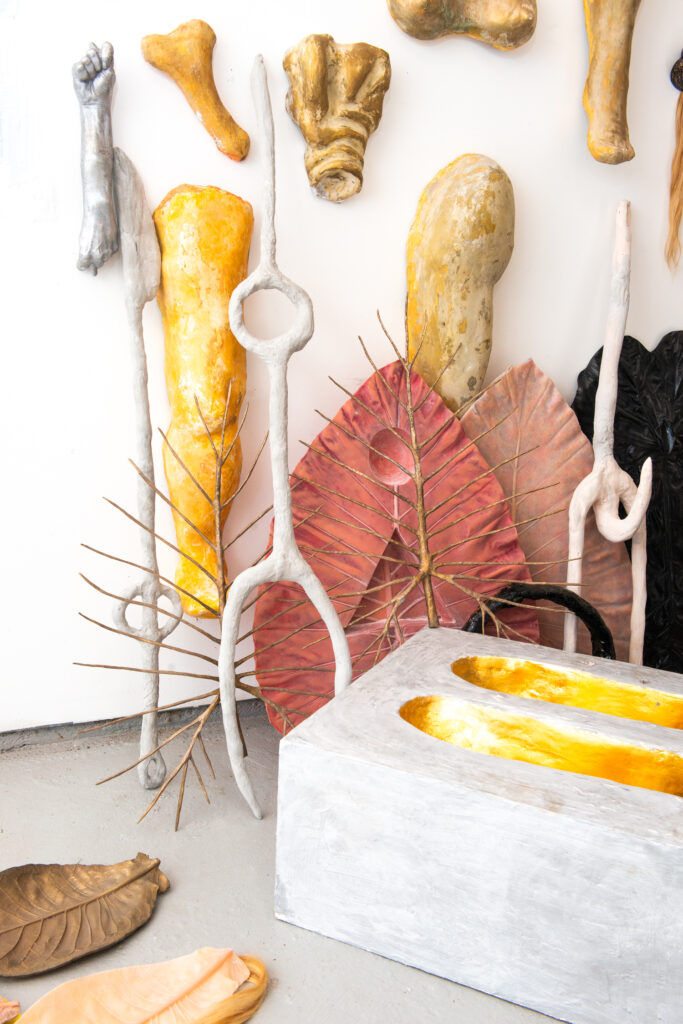About the Work
I was raised on the archipelago of the Toronto Islands and at a Tibetan Dharma Center, among many urban and rural locations including Tinley Park, Illinois, and Salmon Arm, British Columbia, by an alternative medicine practitioner and within experimental social structures.
Deeply influenced by the diverse countercultural environments in which I came of age, my process and research-centered work taps into personal, social, and cultural anxieties regarding mortality and time, value, gender, power, privilege, and infrastructure. Through drawings, sculptures, installations, and artist books, the work incorporates a reverence for ritual, material, and process.
My practice uses academic research as a basis from which to dream radically in an artistic context and to interpret the research on a subconscious level to address the epistemic crisis of reason: searching for a new language to interpret the world and knowledge itself. The type of experimental and eco-feminist research practice I engage in looks at the relative youth of our species and the very brief history of written knowledge, when considered in astronomical, biological, or geological time. It tries to tap into information held in the cells of the body to make new forms and to arrive at new approaches and expand western epistemology at this critical moment of horizontalization.

The practice looks to “embodied” or cellular knowledge to try to tap into far older information outside of the narrow epistemologies of Western European colonialism and beyond written history. Relationships to object spaces are developed in the mind, in the cells, and within the larger constructs and considerations of the cultures in which we live. These are intellectual relationships, emotional relationships, and physiological memory relationships.
I try to interpret the academic research aspects of the work into new forms in the studio that speak very much to the body and integration in space—connecting the ancient and the contemporary—meditating closely on information that is held by the cells of the body. For me, built form in sculpture is constantly political, social, personal, and the perceptions of the body connect to things we have known, felt, lived, and left unspoken.
Current work builds on past experience and follows a period living in the Amazon rainforest as well as a 6-month residency looking at the indexical history of ritual and belief in ancient medicine with a focus on plants, conducted in London in 2017/2018 as a Fulbright Core Scholar at Central St. Martins College; followed by extended research in Los Angeles as a Guggenheim Fellow.
Content of this work engages in a greater dialogue of the Americas from a feminist, decolonial, and “hypersubjective” standpoint, looking at the roots and history of imperial power, oppressed knowledge, and human relationships with the natural world.
Citing practices and ideas from the iron and bronze age through to today, works use research material as a starting point to focus intently in the studio and to access knowledge in the body that is outside of what we think we know. The practice tries to consider our species outside of the human lifespan and in context of other beings/materials in the world. Our species is relatively very young, and our written cultural history terribly short in contrast with our age. This follows a series of works contextualizing human culture in astronomical and geological time.
I am curious about what we don’t know, and the roots of what we think we know, and the inevitably political sources of that information. Information from research is translated to sculptural forms, listening very closely to the body, and may propose a new practical modality to reflect upon subjectivity and complexity in the construction of cultural consciousness in the face of global economic imperialism.